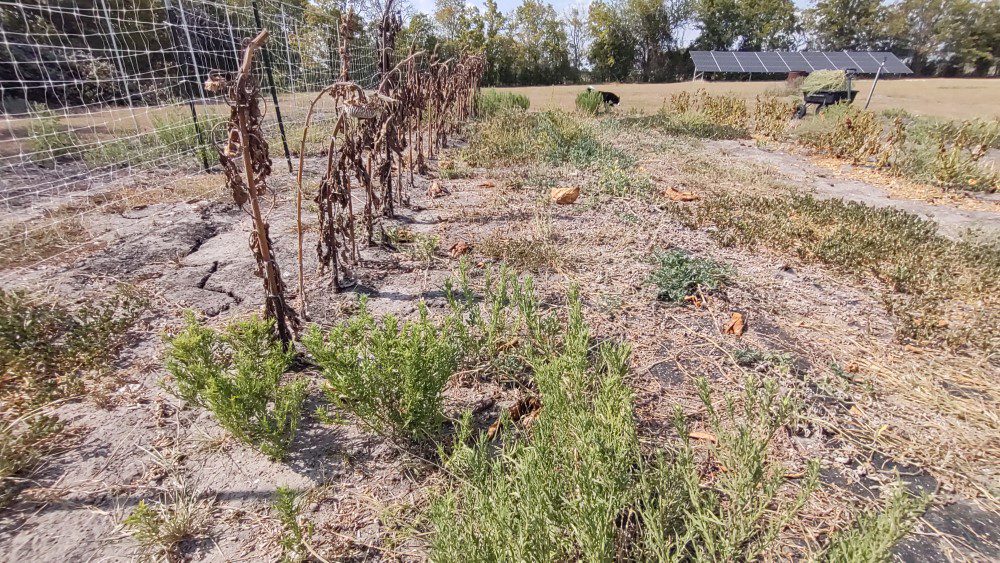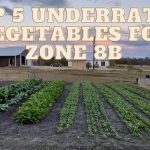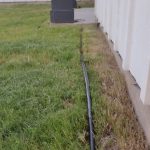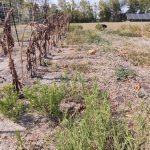While the task of reclaiming an extremely overgrown garden can seem incredibly daunting at first glance, there are several effective tools, techniques, and best practices that can make the process much more feasible and manageable. With the right tools, proper prioritization, and a step-by-step action plan, that jungle of a garden can be tamed and transformed into a beautiful, productive space.
This past spring we planted a beautiful and productive garden on our homestead. Spring led to Summer and we experienced a strong El Nino which led to an extremely hot, dry summer with temperatures over 100 degrees creating challenging conditions. The excessive heat made it nearly impossible to work in the garden during the day. To make matters worse, a drought set in, making watering difficult.
As a result, our garden became sadly overgrown with weeds that thrived in the heat. Because the weather prevented us from keeping up with maintenance, the weeds had months to run rampant and sow their seeds. By August, the garden needed a lot of weeding.
Now, as we move into fall, it’s time to reclaim the space. Although it’s a big task, we are ready with our wheel hoes, pruners and sturdy gloves. With some perseverance and the right techniques, we know we can clear away the tangle of weeds and make our garden productive once more!
Reasons You Shouldn’t Rototill Your Garden to Eliminate the Weeds
When dealing with an extremely weedy, overgrown garden, it can be tempting to try and rototill the entire area to quickly turn over the soil and reincorporate the weed growth. However, this can cause more problems down the line. Tilling large patches of mature weeds will mix multitudes of weed seeds back into the garden soil, replenishing the seed bank. Even if you don’t see the weeds after tilling, those seeds are lurking below the surface ready to sprout again at the first sign of light. It requires more elbow grease upfront, but manually removing weed growth as much as possible, whether by hoeing, pulling, or cutting back, will reduce that seed bank. Taking the time to weed thoroughly by hand at the start will help diminish weed pressure for subsequent growing seasons. Targeted, minimal tilling when preparing beds for planting is fine, but extensive tilling of weedy areas often leads to regret.
Best Garden Tools for Weeding an Overgrown Garden
Wheel Hoe
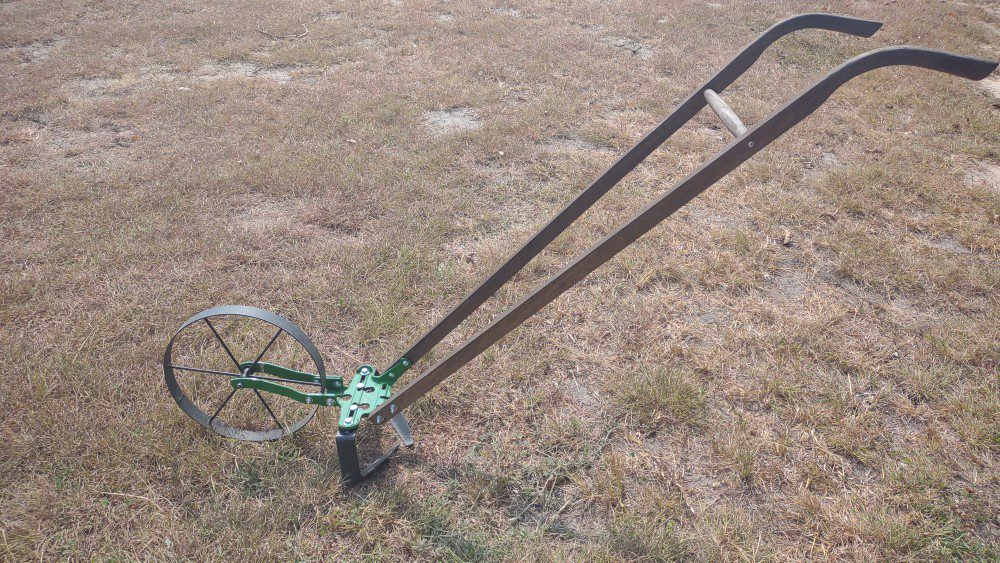
The wheel hoe is my absolute go-to tool for regular weeding maintenance and it works well for reclaiming really weedy areas. This tool is best for in-ground gardens and would probably not work for raised beds. This wheeled tool allows you to efficiently slice through weeds while standing upright, making it much less taxing on your body than hunching over with a standard hoe. My favorite attachment is the set of sturdy sweep blades that glide just under the soil surface, severing weeds right at the root. You can only push the wheel hoe, not pull, but the wide blades cover more area with less work than a hand hoe. It’s not as precise for detailed weeding, but excels at quick maintenance weeding sessions between rows. The key is keeping the blades sharp – this ensures clean cuts rather than just disturbing the weeds. One of the huge advantages of the wheel hoe is that you can work around established plants without damage, cutting close to stems and rows. It really saves your back while keeping the garden tidy. The wheel hoe is an invaluable time-saver that every home gardener should have in their tool arsenal.
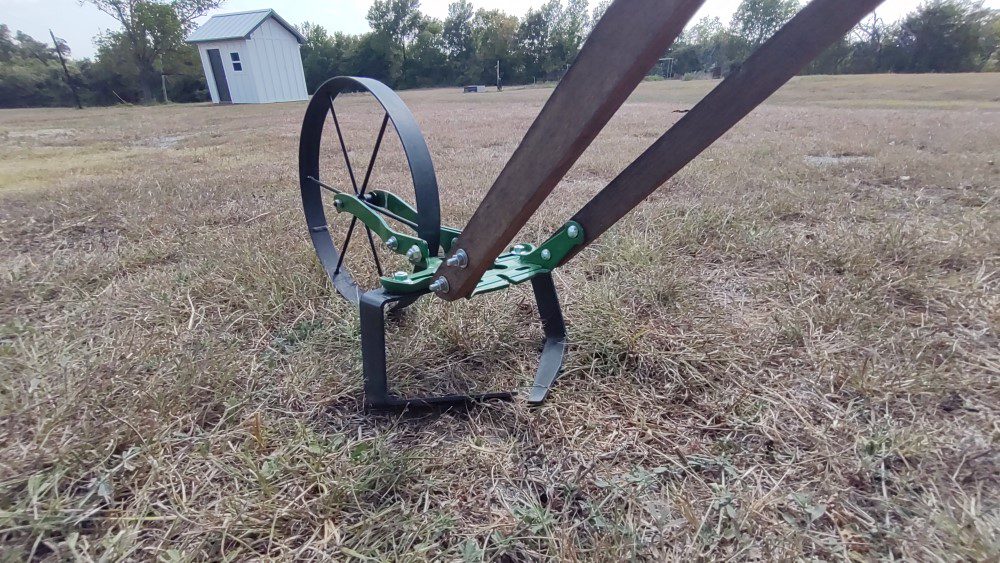
Push Pull Hoe
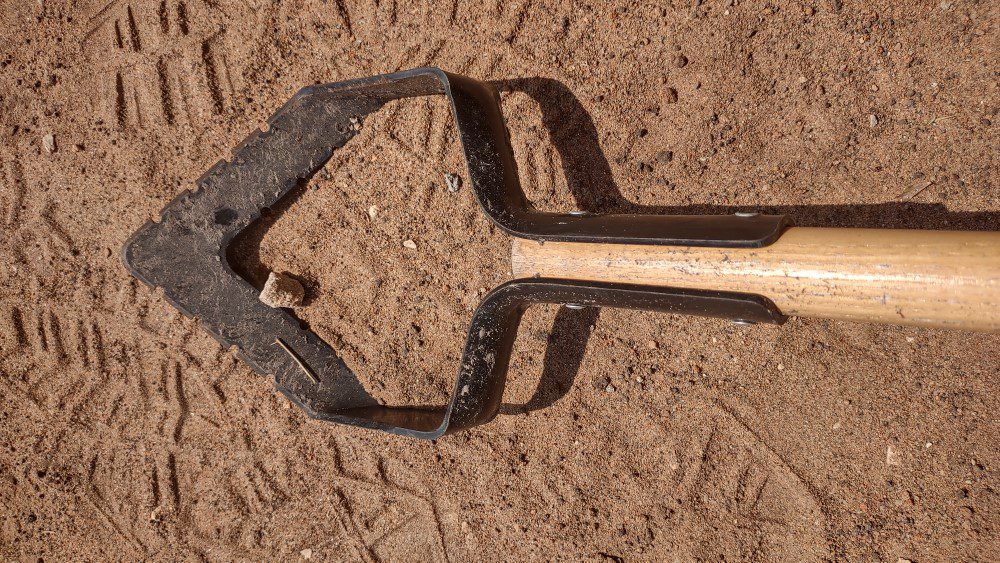
The push pull hoe is another handy tool for tackling overgrown garden areas. This type of hoe has a diamond-shaped head that allows you to slice through weeds with both a forward push motion and a backwards pull motion. The unique double-edged blade angles under the soil surface to sever weeds below the roots. Because it cuts in both directions, you can hoe back and forth in a garden row efficiently without having to reposition yourself. The push/pull motion also provides good leverage and control for tackling densely rooted weeds. This is my go-to when the wheel hoe is too bulky for a particular garden section. The relatively compact size of the push/pull hoe head makes it a great option for working in tight spaces where a regular hoe swing would be hampered. Keeping the blade sharpened is key for optimal weed slicing action. Proper sharpening also prevents the need to hack at roots, which can disturb buried weed seeds. The versatility and precision of the push/pull hoe makes it a valuable addition when reclaiming an unruly garden.
Shuffle Hoe
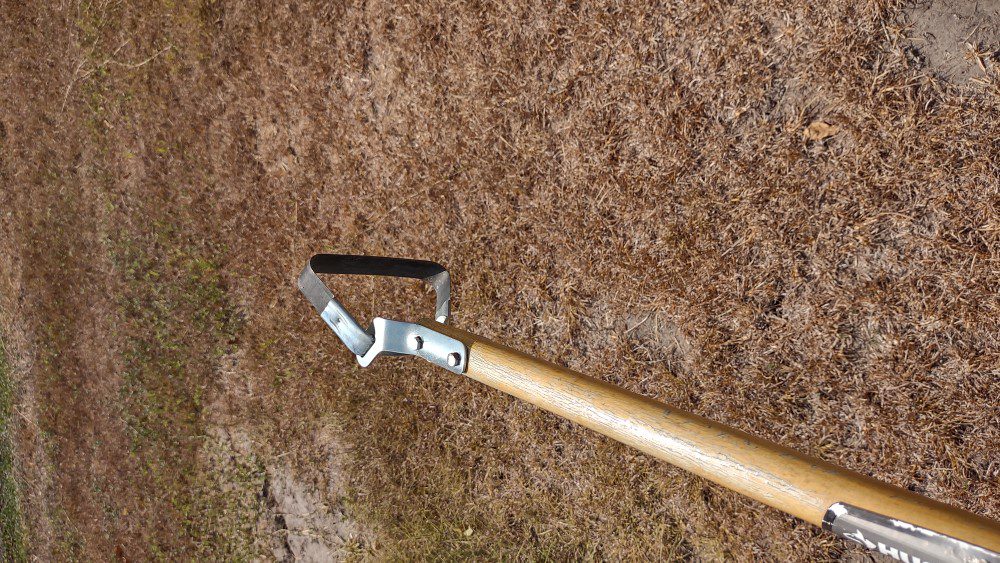
The shuffle hoe, also sometimes called the stirrup hoe or scuffle hoe, is another useful weeding tool. This type of hoe has a blade that slides back and forth in a stirrup-like head, allowing you to weed by “shuffling” the blade just under the soil surface. The light push-pull scraping motion severs shallow weed roots while avoiding digging too deep. The shuffle hoe excels at precision weeding in tightly planted rows or areas with delicate roots systems. Its finer capabilities also make it ideal for surface weeds rather than dense, deep roots that would be better tackled with a sturdier push/pull hoe swing. The blade on the shuffle hoe should be kept very sharp to nimbly slice through weeds without chopping into the soil. With its unique shuffling action, this versatile hoe can tackle weeds efficiently in select areas of an overgrown garden requiring more finesse and control.
Grub Hoe
The grub hoe is a heavy-duty digging tool that comes in handy when dealing with deeply rooted weeds or compacted soil. This robust hoe has a broad, sturdy blade designed for chopping through tough roots and dense earth, going deeper than regular garden hoes. The weight of the blade allows you to fracture packed ground with force, while the flattened edge can be sharpened for precision weed removal. Grub hoes are difficult to find at standard hardware stores, but specialty garden tool retailers like Easy Digging offer various styles. While it requires some muscle, the leverage and grit of a quality grub hoe make it invaluable for getting down into stubborn soil and hacking out the most tenacious weeds. Follow up digging with the grub hoe by breaking up the unearthed soil to prepare the space for new plantings. This rugged hoe takes elbow grease but makes dealing with deeply rooted weeds much more manageable.
Garden & Lawn Rakes
Garden Rake:
A sturdy garden rake is a handy cleanup tool to have on hand when reclaiming an unkempt garden area. As you dig up weeds and churn the soil with hoes, a rake helps smooth out the dirt, remove debris, and prepare the ground for new plants. Choose a bow rake with short, rigid tines to efficiently rake up chopped weeds and move soil on the surface level. The garden rake also comes in handy for loosening the top layer of compacted earth after it’s been chopped with a grub hoe. Raking up leftover organic matter improves the growing environment. Use the teeth of the garden rake to create planting rows and evenly redistribute the soil across beds.
Lawn Rake:
A lawn rake is useful for gathering up the lighter debris that accumulates when rehabbing an overgrown garden. After clearing away dead plants and weeds, a gentle sweep with a fan rake will collect stray leaves, stems and other plant matter. A lawn rake is also great for removing the inevitable litter that gets exposed as you uncover the garden, like small rocks, sticks, etc. The wider row of flexible tines allows you to efficiently rake across larger areas of the garden without moving mounds of heavy soil. Use broad strokes to collect debris into piles for disposal or composting. A quick pass with the lawn rake leaves the garden looking neat and tidy.
Be Systematic About Clearing Your Weedy Garden
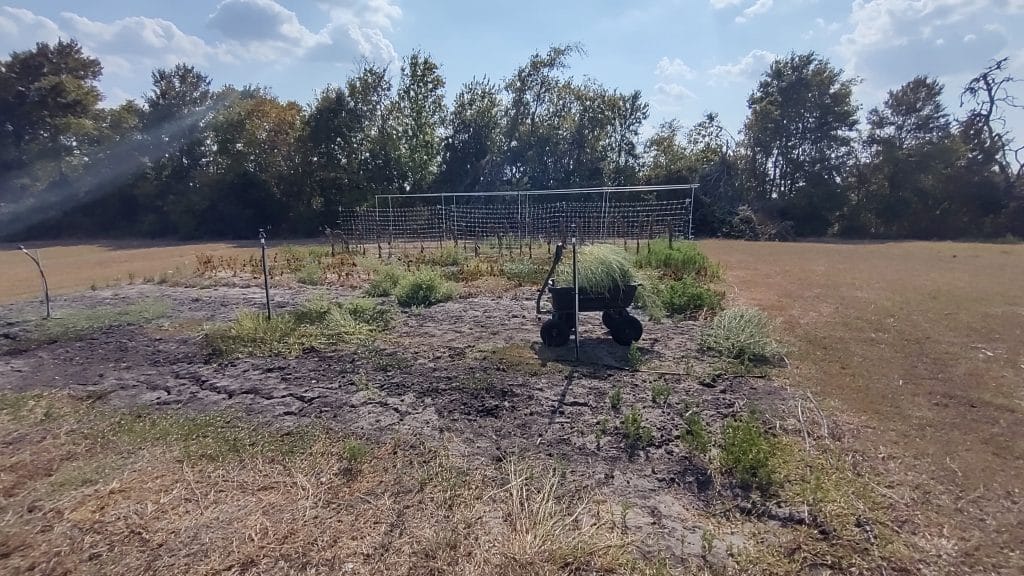
When tackling an expansive, uncontrolled garden space, it pays to be strategic in how you systemize the reclamation process. Break the area into sections and establish a priority order, starting with removing anything that has already gone to seed or is on the verge to prevent further spreading. Grid out sections and work methodically row by row. Be prepared for this to be a multi-day project, pacing yourself to avoid burnout. Work in the cooler morning and evening hours if the midday heat is oppressive. Batch tasks by zone, dedicating certain sessions to primary weeding, clearing dead growth, raking up debris, etc. Allow time between bouts of active clearing to haul away extracted weeds/plants and tidy the space. Having a plan of attack with designated tasks, areas of focus, and built-in breaks will make the intimidating job of reclaiming an overgrown garden much more manageable.
Preventing Weeds for Next Season
Tarping:
An effective way to deplete the weed seed bank and prepare an area for future growing is tarping. After clearing and amending the area, water thoroughly then lay down a heavy tarp or black plastic sheeting, securing the edges with stakes or weights. Leave the tarp in place for at least one full growing season. The shade and lack of air this provides smothers out existing weeds and prevents dormant weed seeds from germinating. When you remove the tarp the following season, that area should require much less weeding maintenance to plant clean garden beds.
Cover Cropping:
You can also combat weeds by planting strategic cover crops after renovating an overgrown area. Fast-growing cover crops like buckwheat or rye grass quickly establish a thick mat of vegetation that crowds out weeds. The cover crop roots also help improve the soil. Allow the non-invasive cover crops to grow until they reach maturity, then till them back into the soil before planting your garden. They’ll provide a fresh ground cover as their decomposition enriches the earth.
Ongoing Hoeing:
Getting in the habit of frequent hoeing between plantings helps keep weeds at bay once you’ve reclaimed an unruly area. Use your wheel hoe or stirrup hoe to regularly sweep down the rows, chopping young weeds as they sprout. This prevents roots from establishing and halts vigorous growth. Staying on top of seedlings by hoeing once a week or more will significantly reduce weed pressure come next growing season.


